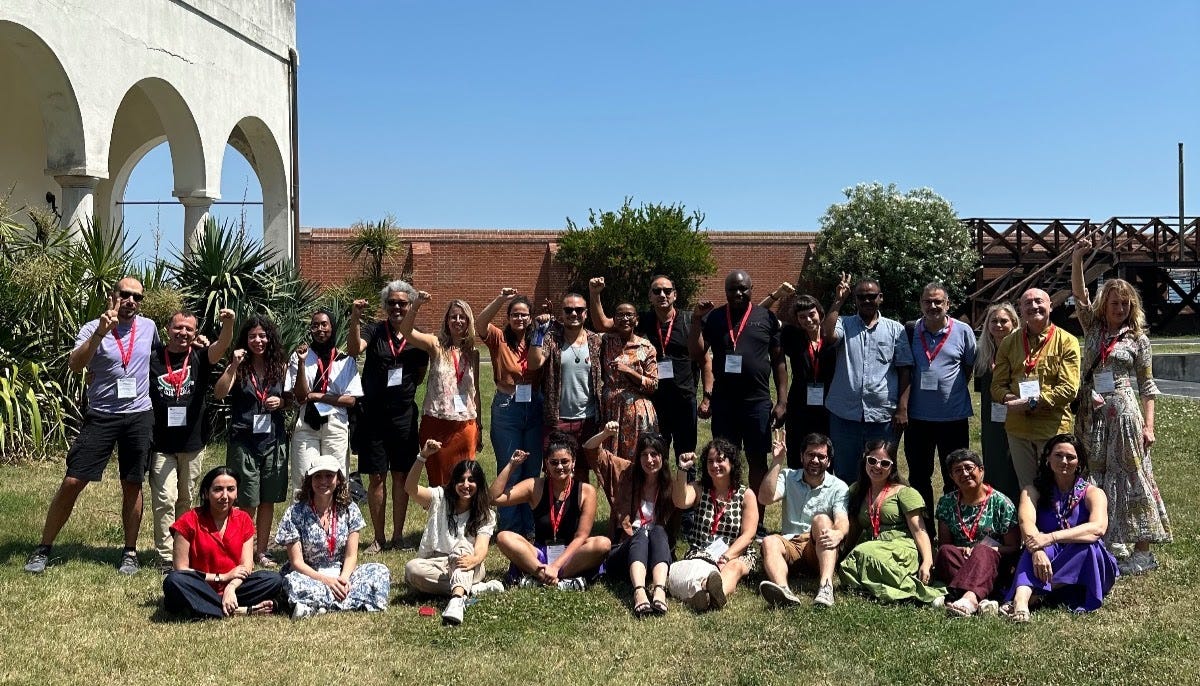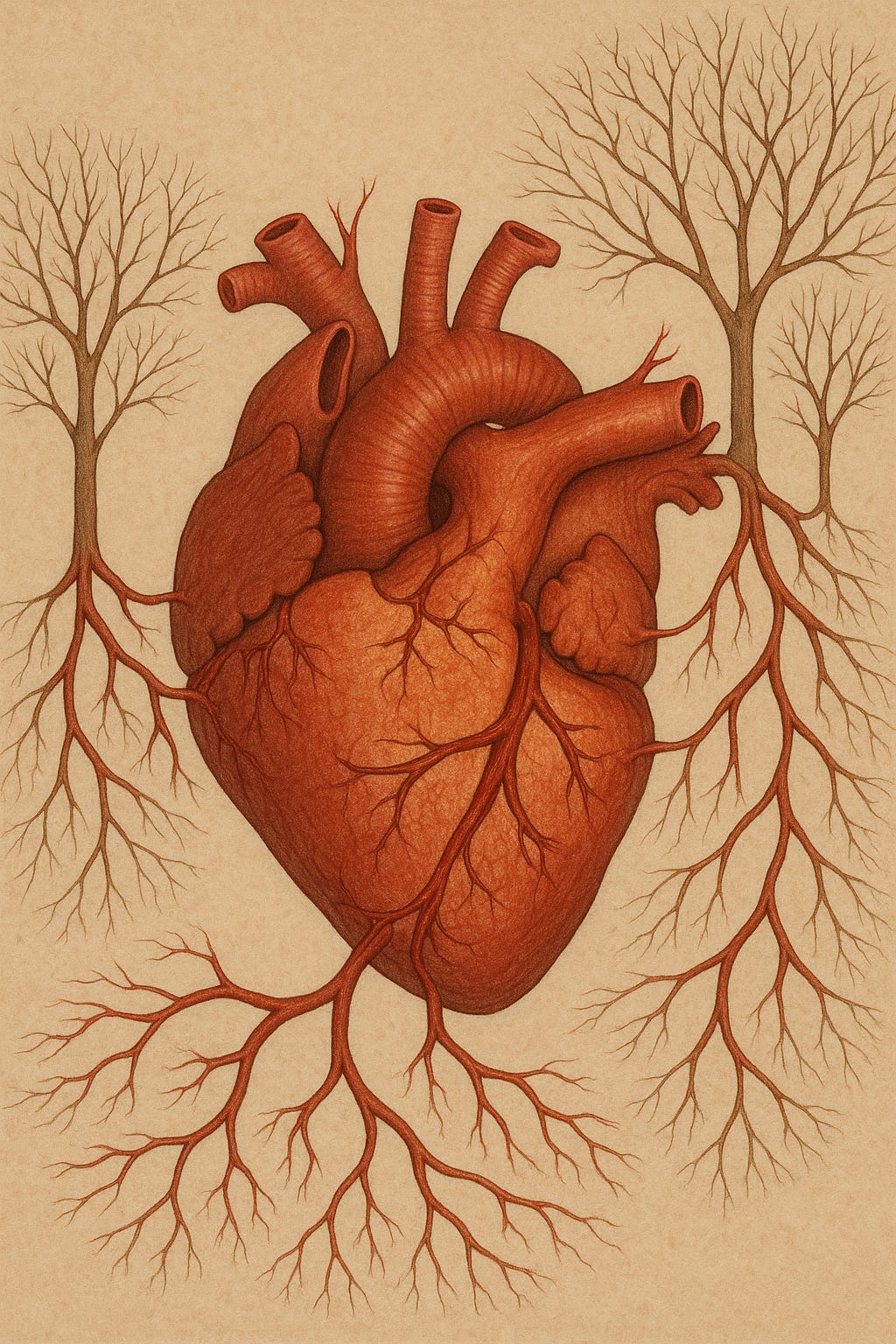Building a Global Web of Life
How I'm making sense of the senseless after a weeklong think tank with global scholars on Mental Health and Human Rights
Everything is senseless when a genocide is made visible to the world and allowed to continue. Everything.
Last week I spent a week in Venice putting my head and heart together with 27 other humans from around the world. Our topic: Mental Health and Human Rights in the context of Structural Violence and War. We were truly a diverse group; perhaps the most diverse group I’ve been part of to date. Professionally, we included human rights lawyers, psychology and education researchers, clinical psychologists, and coordinators of global mental health programs in countries as diverse as Columbia and Afghanistan. Geographically, we came from Sudan, Palestine, Somalia, Bolivia, South Africa, Northern Ireland, Switzerland, Australia, the U.S., Italy, and beyond. We were even so lucky as to spend the week with the director of the Gaza Community Mental Health Programme, Dr. Yasser Abu-Jamei, who is now living outside of Gaza for his own safety.
Some days I woke thinking that if anything at all was going to make sense in this world, it was going to happen in this room, with these people.
Of course, I didn’t walk away from that room making sense of things, much less having fixed everything. But I did leave with a profound experience of shared humanity and the collective witnessing that is necessary for our world’s repair.
Relational psychoanalysis tells us that enactments are happening all the time — little things we say or act out unintentionally that show what’s really going on unconsciously (sometimes, enactments aren’t so little). Because these happen all the time, it’s no surprise that some small enactments also happened in our group. It doesn’t matter if we’re all thoughtful, benevolent people. No person on the planet lacks jealousy, anger, or fear; what matters is how we deal with our emotions and accumulated traumas.
As one of our group was describing how they experienced a racialized microaggression in Venice, another participant who witnessed this event advised them: “Don’t take it personally. The person who did it has some kind of mental illness.” Now, this statement goes against our collective values for multiple reasons, but as is the way with enactments, it could have been uttered by any one of us.
Mental illness and psychological distress aren’t an excuse to act without regard for how one’s actions impact others. If anything, that kind of treatment further divorces someone who is already suffering from their place in community. While they themselves may not be able to take responsibility for the other, their microaggression can be an opportunity to think collectively about what is being communicated unconsciously. My colleague’s comment instead suggested that we don’t need to think about it, as if the one aggressed and the one with supposed mental illness just have to carry on in their own private suffering.
Thankfully, our group didn’t stop there. We were able to hold the suffering of the one in our group as a real experience and an indication of assumed racial-historical dynamics that are perpetuated all the time.
It became clear how every person in that room carries some kind of personal trauma that is also a window and a thread into collective trauma. We could easily devolve into a comparison of trauma histories. Who had it worse? Who has it worst now? Whose suffering should be centered in this moment? When people let jealousy and fear lead as if there is a hierarchy of suffering, that is exactly what happens.
In contrast, decolonizing global mental health recognizes multiplicity as its first principle. There is not a hierarchy of suffering. There is only unity through difference. “It’s not personal” expresses a fear that listening to the suffering of one will preclude being listened to ourselves. But this fear can also be transformed into a great holding container that has the capacity to keep on listening. We want to know: How is this personal? How is this the story of your people, being re-enacted in the present? In this way, we re-member our collective humanity.
Today I woke with a vision of a heart. Some of its arteries had been cut, as happens in relational ruptures. But at the same time, new arteries were growing, like the roots of a tree, reaching out to make contact with other life. This is the image of my worldwide community. It is the image of hope when still, everything is senseless.
When we believe that our suffering is the only suffering that matters, we cut and cut and cut as if that is the only way to have safety or belonging. Cutting off the life of one’s global neighbors will never bring safety. Sadly, I can’t stop others from such violent acts. But what I can do is reach out with the lifeblood I have to those in vastly different circumstances around the world, and be reached in turn by them. We are building a global web of life, and that is the strongest thing there is.



